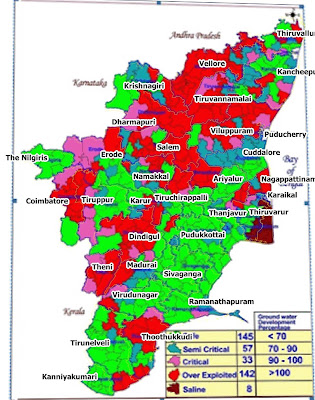Buddhist holocaust of Kerala
Saturday, July 15, 2006

Saturday, July 15, 2006
In India, every person has had a glorious past. Glorious Vedic, Buddhist, Dravida and probably non-patriarchal past. I will restrict myself to Buddhist past of Kerala.
Just other day, I came across a comment that Buddhists were all holocausted in Kerala. Since this part of the history is a constructed from archeological evidences and not recorded in the history, in print or in visual media, I think I can question this without being labelled as a holocaust denier.
I do have serious problems with glorious Buddhist past theory. Whenever, some of the propagandists from Kerala portray Buddhism as something secular, egalitarian and noble, I laugh. Just show that to me in the past Sri Lankan society.
Malayalee society before 7th century:
It seems Malayalees became agrarian society around 7th century CE. Well, Kerala society existed even before that. So what could have been the main communities of Proto-Malayalees. I can think of only tribals and fishermen. Tribals, could be spirit worshipers or shamans. What about fishermen, probably idol worshipers, worshiping the goddess of the sea and probably Tantriks. So what happens when Buddhist preachers visit such a society? For that, we have to understand the spread of Buddhism in pure Shamanist Tibetan society.
Shamans and Buddhism:
Shamans and Buddhism:
A member at Quetzalcoatl Anthropology forum mentioned that Tibetans got Shamanic religion from Burushos which was later supplanted by Buddhists from South Asia (Or is it from China, I forgot). Initially, Shaman priests were barred from practicing the religion. However, Buddhism being more egalitarian when it comes to education these Shamanist priests could merge their religion and could give rise to a synthesis of Buddhism and Shamanism, claiming back their priestly position. So there is no relation with Buddhism and Shamanism.
Tantriks and Buddhism in Kerala:
Tantriks and Buddhism in Kerala:
Among fishermen and tribals who could be the most advanced community? I think it should be fishermen. Just as in Tibet, the Tantrik fishermen also got educated because of Buddhism. However, unlike Tibet their Tantrik religion remained dominant and Buddha was lost. Again there is no relationship between Buddhism and Tantra.
South Indian society and religious wars:
In South India, many rulers were Jains until probably 12-13th century. The most of the religious wars were between Jains and Saivites(in Tamil Nadu and Karnataka) and between Jains and Buddhists(in Andhra Pradesh). At least, these were recorded in the history. I don't have any idea if any Andhra Pradesh Brahmins are known as Tantris. So I am not sure what happened to Buddhists of Andhra Pradesh. Since Jains were mostly rulers and elite in all of the South Indian society their numbers remained small or they were absorbed into Vishnuism of later centuries(as both had common enemies in Saivas). It should be noted here that Buddhists were never rulers of South Indian society.
Kerala Buddhists or most probably only Tantriks:
I don't think Tantriks of Kerala knew the story of Pushyamitra Shunga of 2nd century BCE. Also, since I don't believe Buddhists were ever rulers of Kerala society those Tantriks had any identity. The rulers could be mostly from the Shamanic tribals. As Vaidiks migrated to Kerala society something happened and all the Tantriks got merged with them. Of course, just like those Shamanist priests of Tibet, they continued to control the temples of Kerala but changing its character. I believe there could be a Jain holocaust in South India(which again I don't believe) but never Buddhist holocaust.
Reference:
1. Pattars in Kerala society. From the article;
They(Tamil Brahmins) held themselves higher than Malabar Brahmins and Namboothiris, who they say sprang from fisherman elevated to Brahminical dignity by Parusuraman.















